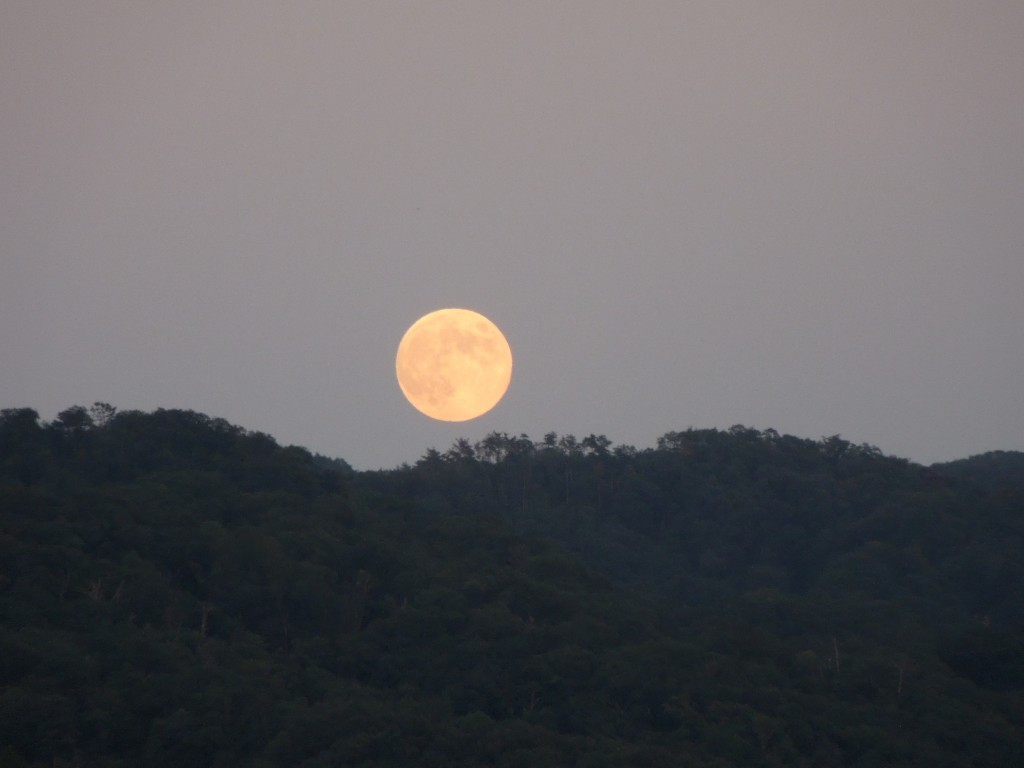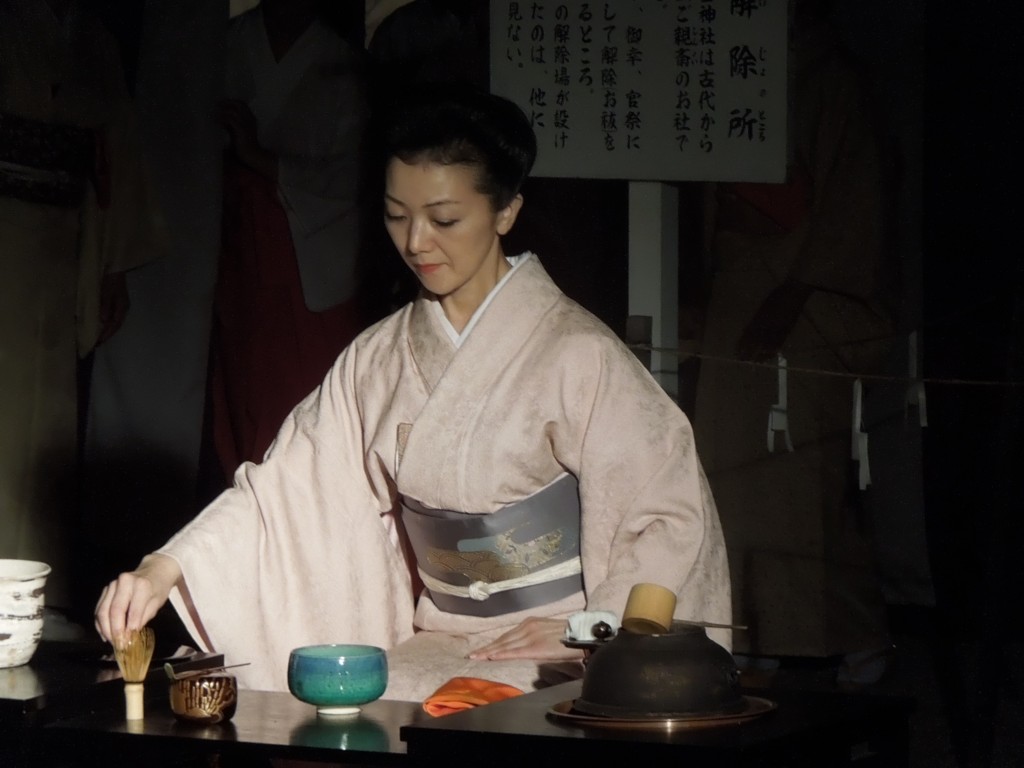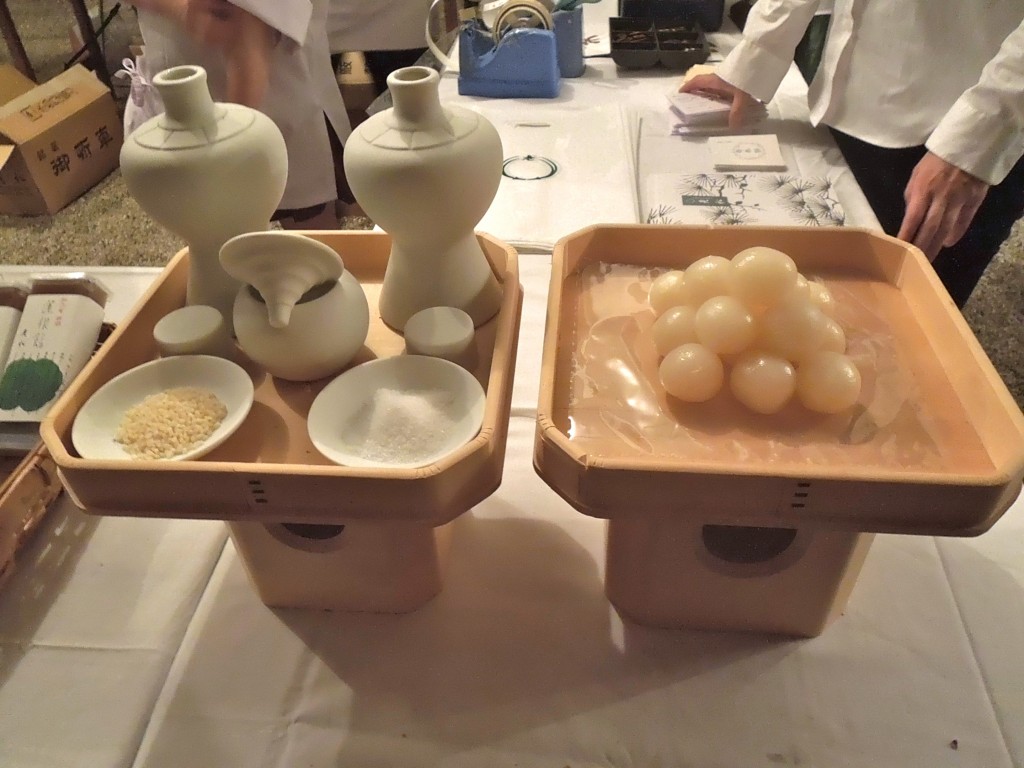
A bloated autumnal moon rising above one of the 36 peaks in Kyoto's Eastern Hills
Tonight’s the night!
Shrines in Kyoto will shortly be celebrating the autumn moon, and in the case of Shimogamo, the festivity showcases what to my mind is the very best of Shinto – the seasonal celebration of nature combined with the refinements of Japanese culture.
Koto and kagura provide the accompaniment to the rising of the harvest moon, as elegantly clad miko and hostesses perform the tea ceremony for paying guests. The emergence of the moon from behind the tree tops of the Tadasu no mori woods produces gasps of pleasure in the shrine compound, as the assembled crowd delight in the aesthetic pursuits of Heian aristocrats. Shinto, it should not be forgotten, is no less a guardian of the nation’s heritage than a religion derived from animism.
************************************************
For a previous account of the Shimogamo moon festival, complete with pictures of the tea ceremony and special ‘moon dumplings’ see this page. What follows below is an article from the Kyoto Visitors Guide for this month, accessible here:
No place could better suited for full moon viewing than timeless Kyoto. Of all the year’s 12 full moons, the autumn full moon, or harvest moon, is considered to be the most sublime.

Japanese refinement at its best - the elegant ritual of the tea ceremony
It is said that the moon viewing custom was introduced to Japan from China during the Nara (710-794) and Heian periods (794-1185). Harvest moon viewing took place on August 15th in the lunar calendar, and it was called jugoya, which means the night of the 15th. Jugoya in the present calendar changes every year and usually falls in September or October. The moon on jugoya is not always full, but it’s said that the moon on that night is the brightest and the most beautiful in the year.
In times past, and even today, it was not uncommon for people to set up small tables by the window to enjoy the full moon light while eating tsukimi dango (rice and sweet bean dumplings made specially for the occasion), and sato-imo (taro, a tropical root). Sprays of susuki (pampas grass), which resembles the rice plant, and other autumn grasses are displayed on the verandah, along with neat clusters of tiny rice dumplings. On a more public level, celebrations are held in temples and shrines.
The word, tsukimi (moon viewing), is used in Japanese food as well. For example, tsukimi soba and tsukimi udon are well-known. They aren’t food for moon viewing. Tsukimi refers to a cracked egg in Japanese cooking; the egg yolk represents the moon. Tsukimi udon/soba are hot udon/soba noodles served with raw egg toppings. McDonald’s in Japan even sells tsukimi burgers, which are hamburgers with fried egg fillings!

A full set of offerings and moon dumplings

I wanted to go, but didn’t go, perhaps next year although it was a beautiful evening!